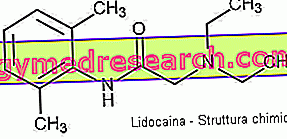Edited by Silvia Avnet
PNF
It derives from the English words " Proprioceptive Neuromuscular Facilitation " which in Italian means "neuromuscular proprioceptive facilitation".
This stretching system is divided into 4 stages:
maximum muscle stretching is achieved gradually and slowly;
an isometric contraction is performed for about 15/20 seconds (always in the position of maximum elongation);
relaxes the isometrically contracted muscle for about 5 seconds;
the muscle stretches again (previously contracted) for at least 30 seconds.
The entire procedure is to be repeated twice. This type of stretching is used a lot in rehabilitation therapy and, in many cases, requires the intervention of a second person.

| I go to the max extension position | idem | idem | this is the max extension position |

| with the hand I offer a resistance against which D. pushes | D. exerts an isometric contraction for about 15 sec | relaxation for about 5 sec | lengthening for 30 " |
CRAC
It derives from the English words "Contract Relax Antagonist Contract" which in Italian means "contraction, relaxation and contraction of antagonist muscles". It is similar to the PNF, from which it differs in the final phase of the stretch. In fact, it involves the active intervention (contraction) of the agonist muscles of the movement. Also in this case it is often necessary the help of a second person who offers resistance during the isometric contraction of the antagonists, and which helps the elongation of the antagonists in the agonist contraction phases. Taking advantage of mutual inhibition, the CRAC is the sum of the effectiveness of PNF, that of active stretching.

| I go to the max extension position | idem | idem | this is the max extension position |

| with the hand I offer a resistance against which D. pushes | D. exerts an isometric contraction for about 15 sec | relaxation for about 5 sec | active static elongation for 30 " |



